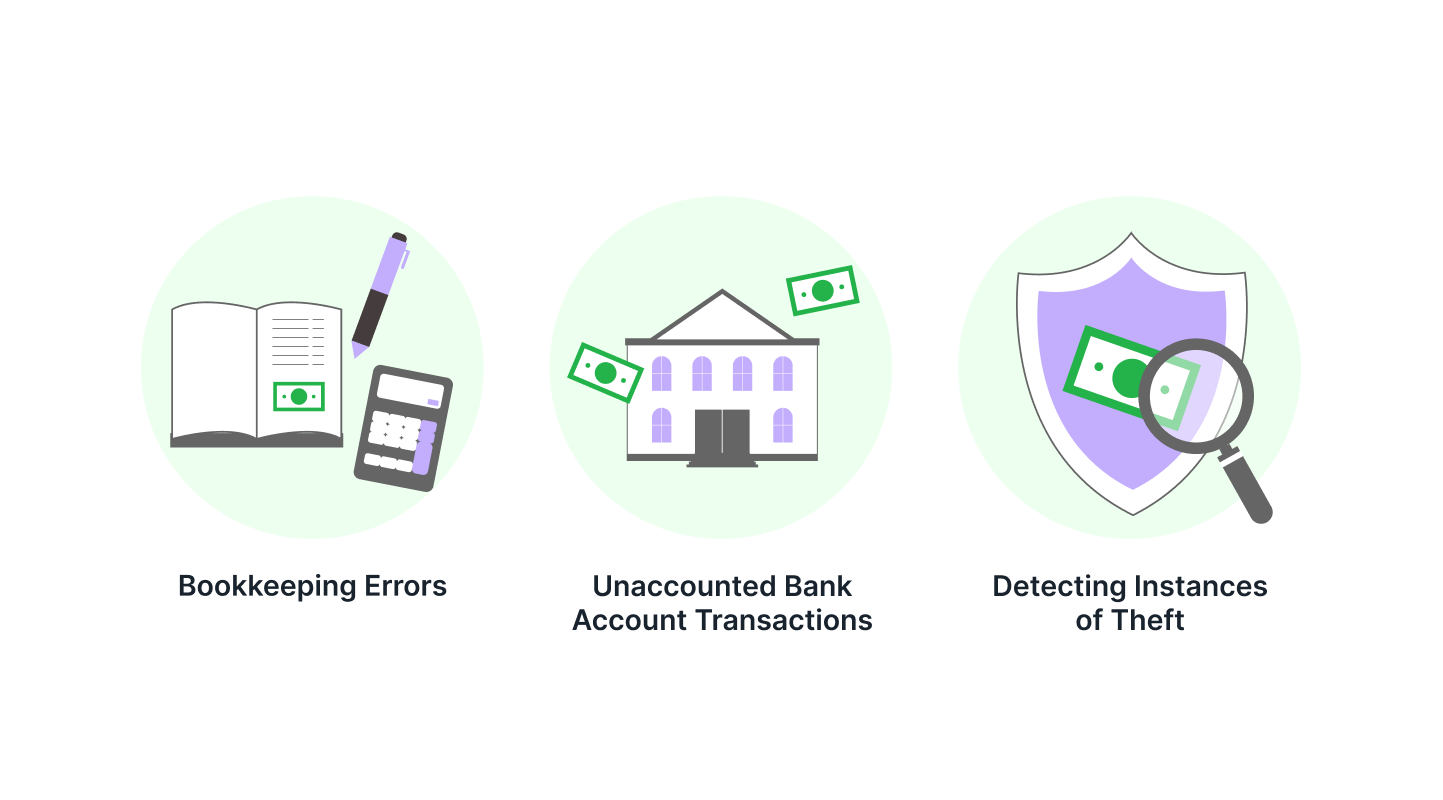In the fast-paced world of business, accurate account reconciliation plays a pivotal role in maintaining financial stability and success. As a business owner or finance professional, you understand the significance of precise financial records and the impact they have on decision-making and overall business performance. At OakStreet Technologies, we recognize the importance of accurate account reconciliation, and we offer comprehensive services to assist businesses in achieving this vital financial process. In this blog, we will explore the importance of accurate account reconciliation for businesses, highlighting the benefits it brings and how we can support your organization in this critical endeavor.
Understanding Account Reconciliation
Defining Account Reconciliation: Account reconciliation is the process of comparing and matching financial transactions recorded in a company’s books with external sources, such as bank statements or vendor invoices. It ensures that the financial data entered in the books accurately reflects the transactions that have taken place.
The Role of Bank Reconciliation: Bank reconciliation is a specific type of account reconciliation that focuses on comparing a company’s bank statement with its internal records. This process involves identifying and resolving discrepancies, such as outstanding checks, deposits in transit, and bank fees. Bank reconciliation is crucial for ensuring the accuracy of a company’s cash position and financial statements.
The Importance of Accurate Account Reconciliation
Detecting Errors and Fraudulent Activities: Accurate account reconciliation serves as a vital tool for detecting errors, discrepancies, or potential fraudulent activities within a company’s financial records. By regularly reconciling accounts, businesses can identify and rectify errors promptly, ensuring the integrity of financial data. Timely detection of discrepancies can prevent financial loss, reputational damage, and potential legal issues.
Ensuring Financial Accuracy and Compliance: Precise account reconciliation is essential for ensuring the accuracy of financial statements and compliance with accounting standards and regulatory requirements. Accurate financial reporting instills confidence in stakeholders, such as investors, lenders, and auditors, and demonstrates a commitment to transparency and compliance. It also helps businesses avoid penalties or legal repercussions resulting from inaccurate or incomplete financial information.
Improving Cash Flow Management: Accurate account reconciliation enables businesses to effectively manage their cash flow. By comparing bank statements with internal records, companies gain visibility into their available funds, outstanding payments, and any discrepancies. This information empowers organizations to make informed decisions about cash flow management, such as optimizing working capital, avoiding overdrafts, and taking advantage of investment opportunities.
Best Practices for Accurate Account Reconciliation
Regular Reconciliation: Regular account reconciliation is crucial for maintaining accurate financial records. It is recommended to reconcile accounts monthly, or more frequently for high-volume businesses. By establishing a consistent reconciliation schedule, businesses can identify and resolve discrepancies in a timely manner.
Detailed Transaction Analysis: Accurate account reconciliation involves conducting a detailed analysis of transactions. Beyond simply matching figures, businesses should review transaction details, such as invoice numbers, dates, and descriptions, to ensure accuracy and identify any anomalies. This analysis helps identify potential errors or fraudulent activities that may otherwise go unnoticed.
Leveraging Technology for Accurate Account Reconciliation
Automated Reconciliation Tools: Utilizing automated reconciliation software can significantly streamline and enhance the accuracy of the reconciliation process. These tools can automatically match transactions, flag discrepancies, and generate reports. By reducing manual efforts, businesses save time, minimize errors, and improve overall efficiency.
Integration with Accounting Systems: Integrating reconciliation software with existing accounting systems enables seamless data transfer and synchronization. This integration eliminates the need for manual data entry and reduces the risk of errors. It also provides real-time access to financial information, enabling businesses to make informed decisions based on up-to-date data.
The Significance of Account Reconciliation in Business

The accuracy and reliability of financial information play a pivotal role in the success of your business. To make informed decisions that foster growth, it is crucial to have comprehensive and precise financial data at your disposal.
Equipping yourself with the right information entails implementing robust internal controls, which encompass regular account reconciliations. Though it may seem laborious and time-consuming, it stands as an indispensable accounting control measure.
By engaging in regular account reconciliations, you can effectively identify the following:
- Bookkeeping Errors: This encompasses instances of unrecorded sales and duplicate expense entries.
- Unaccounted Bank Account Transactions: These include overlooked fund transfers and unposted service fees.
- Detecting Instances of Theft: Such cases may involve payments made to fraudulent vendors or misappropriation of inventories.
Regular account reconciliation instills confidence in the reliability of your financial information. By conducting timely reconciliations, you safeguard yourself against poor business decisions and pave the way for success.
The Procedure for Balancing Sheet Account Reconciliation
Here is a comprehensive four-step process to undertake when performing account reconciliation tasks:
Step 1: Compilation of Necessary Documentation
Initiate the process by preparing a work paper for each account featured on the balance sheet. This documentation should encompass the following details:
- The account’s name and number, as it appears on the balance sheet.
- A concise statement outlining the purpose of the account.
- A brief description of the regular debits and credits associated with the account.
- The accounting period within which the analysis is conducted.
- Account activity throughout the period, with presentation determined by the account’s nature and monthly volume.
- Verification of the account’s end balance through a review of supporting documents.
- The name and contact information of the individual responsible for preparing the account reconciliation.
- The completion date of the reconciliation.
- A list of individuals, along with their contact details, available to address any inquiries pertaining to the account.
- Ensure that updates to account information are made when modifications occur in processing and other related data.
-
Step 2: Analysis
Upon closing each month-end, undertake the following actions:
- Verify the opening balance using previous work papers, confirming a zero balance for new accounts.
- Review each activity recorded under the account to ensure the following:
- Proper categorization aligned with the specific account.
- Authorization and compliance with state and federal laws, policies, and regulations.
- Adherence to the account’s purpose and guidelines.
- Confirm that all receipts, charges, and expected activities are appropriately reflected under the account.
- Make necessary adjustments supported by substantiated evidence within your financial records.
- Resolve any discrepancies or errors discovered during the account reconciliation process, ensuring corrective measures are taken promptly.
- Retain copies of relevant supporting documents associated with the account’s activities.
- Verify the ending balance to ensure agreement between the account reconciliation and the general ledger balance.
-
Step 3: Analysis Review
At the close of each quarter, submit the account analysis to the controller’s office for review. Their responsibilities include:
- Ensuring that the analysis covers all funds pertaining to the specific balance sheet account.
- Confirming agreement between ending balances and the general ledger.
- Verifying the substantiation of ending balances through supporting documents.
- Assessing the reasonableness and appropriateness of all account activities.
- Addressing corrective actions or adjustments if deemed necessary.
- Evaluating fund and reporting categories within the account for retention purposes.
-
Step 4: Documentation Retention
Upon completion of the process, it is imperative to retain supporting documents until any unresolved items related to the account balance have been cleared.
Adhere to record retention guidelines when preserving supporting documents linked to period activity. This includes, but is not limited to, the following:
- Records of accounts receivable
- Cash receipts
- Journal entries
- Invoices from vendors
-
By following these meticulous steps and guidelines, businesses can effectively maintain accurate financial records and enhance their decision-making processes, ultimately driving their success.
Conclusion
Accurate account reconciliation is an indispensable component of financial management for businesses. By detecting errors, ensuring compliance, and optimizing cash flow management, businesses can make informed decisions and achieve their financial goals. Implementing best practices, leveraging technology, adopting the procedure for balance sheet and partnering with OakStreet Technologies can empower your organization to maintain accurate financial records, enhance decision-making, and drive long-term success.
Contact OakStreet Technologies today to discover how we can support your business in achieving accurate account reconciliation and financial excellence.



